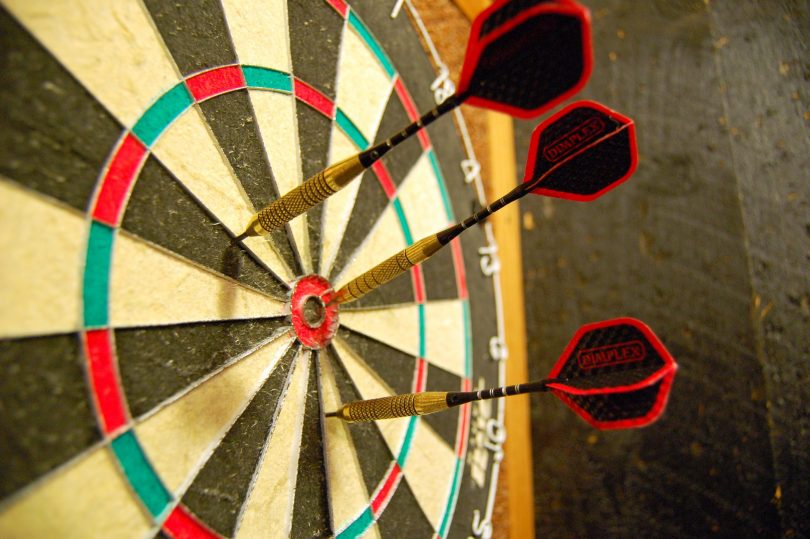From your local pub to private recreation rooms across the world, Darts is a staple game that nearly everyone should already be familiar with. Since you’re reading this, it’s safe to assume that you’re interested in learning to play darts, but might be slightly confused about the rules. The basic regulations are all the same, but there are a few different varieties of games that you should be aware of (much like with card games).
First off, as you are probably already aware, players must throw their darts from behind a line that is 7 feet, 9 ¼ inches away from the face of the dart board. Likewise, the board itself must be positioned in such a way that the bull’s-eye is exactly 5 feet 8 inches from the floor.
The board itself is numbered from 1 – 20, these numbers assist in scoring. The very center of the board, also called the “bull’s-eye”, is divided into 2 sections: the outer portion is called the “bull” and the tiny center dot is called the “double bull”.
When starting a match, competing players are to line up and toss a dart toward the double bull; the player who is closest to the double bull gets to throw first. Each of the 20 sections of the board (which extend inward) will feature black / yellow or red / green zones. If a player lands on a black or yellow zone they are allotted the points assigned to that numbered zone. However, if a player hits one of the smaller red or green zones in the outer ring (within a numbered area), they are given double the points for that numbered zone. Similarly, if a player lands a dart in one of the red or green zones in the inner ring, they get triple the points for that numbered zone. The “bull” section of the bulls-eye is worth 25 points and the “double bull”, 50 points. The maximum score a player can get on one turn is 180 points.
During an actual game, players take turns throwing 3 darts each from behind the line. In a traditional match, the player with the highest score wins, however certain games might require the player to hit a double to win. These types of games are often referred to as ’01 games (301, 501, 701, 901 & 1001) and are typical of what you might find in your average English pub. Other possible rules or options might include:
- Double-in – a double point value segment is needed to begin play.
- Double-out – must attain “0” by getting a score in a double point value zone.
- Doubling-in & Doubling-out – must score a double while starting and finishing
- Masters out – must reach “0” in a double or triple point value segment.







